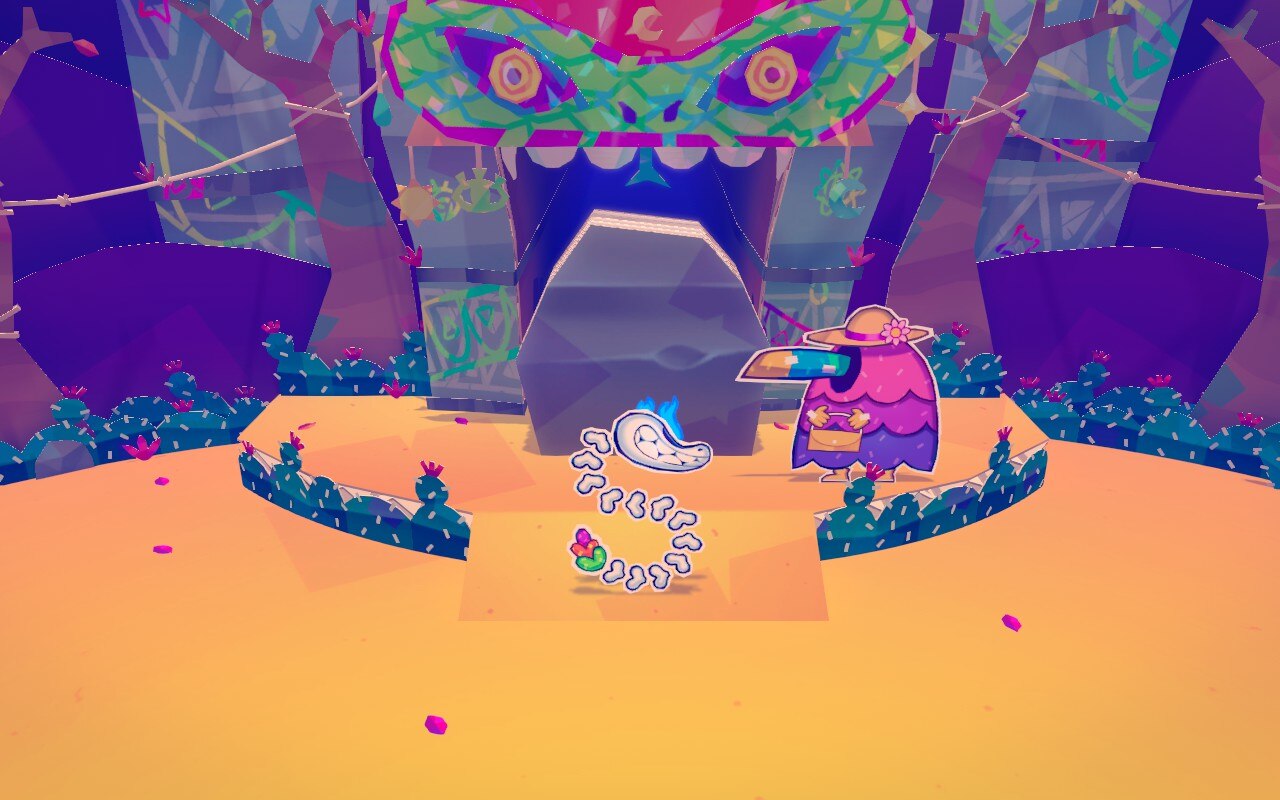
Aloft’s Clever, Cozy Survival Mechanics Impress in Latest Demo
With a focus on ecological restoration and a cool approach to exploration and crafting, Aloft shows a lot of promise as a feel-good survival-crafting game. This cozy take on the genre encourages players to glide between floating islands in the sky and fight corruption to restore their ecosystems while discovering the ruins of an ancient civilization. Notably, its first-person town-building and crafting systems seemed exceptionally deep based on my hands-off demo of the game.
In just half an hour, one of Aloft’s developers walked me through the beginning of the game and showed me in-depth tutorials for its myriad systems; so many that I’m glad I went hands-off to watch an expert at work. Nearly everything I saw seemed clever and engaging at the very least and was always framed around Aloft’s core conceit of creating a survival game with a positive, restorative message and vibe.
Off the bat, Aloft’s setup is immediately cool: you start out on a floating island in the sky with nothing. As you work your way through the starting area, you’ll eventually get a glider (think somewhere between Avatar: The Last Airbender and Breath of the Wild), and take flight to another island. Zooming from island to island looked really freeing, and developer Astrolabe Interactive made a point to incorporate systems to keep it engaging and interesting rather than just a hollow jump from one floating rock to another.
Aloft’s momentum systems fuel a lot of its moving parts. It’s crucial for successfully navigating the sky.
Aloft’s momentum systems fuel a lot of its moving parts. It’s crucial for successfully navigating the sky, and certain environmental bits like updrafts can help you gain some extra momentum—and height—as you make your way to the next island. Once you build enough momentum and land on another island, you might find yourself in a corrupted ecosystem.
Overrun with mushrooms and a dense, gray-brown fog, it’s immediately clear that something’s not right here. You can’t even harvest or mine anything from these out-of-whack biomes until you stave off the fungal corruption. Based on what I’ve seen, this is the only place where Aloft has combat. Using timing-based real-time systems (kind of like active reload in Gears of War) to gain small bonuses to boost your attack rate, you’ll fight off small waves of goblin-like mushrooms as you attack the root of the corruption.
Clearing these tree-like fungal structures from the biome will allow you to begin restoring it. Aloft more or less tells you exactly what you need to do to help bring it back to life, which will usually involve diversifying the flora on the island by planting new plants to help improve that microcosm’s sustainability. Once it’s flourishing, you can finally harvest plants from the island and you might even chance upon a helpful critter like a sheep to help produce wool.
With the right materials, you can even pitch a sail on your island. All you need is a rudder, a wheel, and a few sails to catch the wind that’s constantly blowing thanks to the massive hurricane at the heart of Aloft’s map. Crafting in general might be the most interesting system Aloft has going for it, in fact – especially in how you unlock new recipes.
Let’s say you stumble on an abandoned house with some cool furniture you haven’t seen. By drawing that piece of furniture, you’ve suddenly unlocked its crafting recipe for your own home.
The first is tied to the game’s story. Stumbling upon stone frescoes left by an ancient civilization will reveal new ideas to you, teaching you how to make stuff that’s important to Aloft’s story and progression. This is going to be how you unlock critical pieces like the Glider Stand or the aforementioned rudders and sails.
Next is the more traditional route, which strikes the perfect balance between leaving it up to you as the player to discover a new recipe and showing you how to make it outright. Instead of just showing you everything you can craft with an item from the get-go, small indicators will tell you whether or not you’ve explored every possible combination of materials without explicitly saying what those combinations will make. This seems like the perfect balance of mystery and encouragement and plays well into Aloft’s overall sense of discovery and mystery.
The last crafting method might be the coolest thing I saw in the demo. You can fill out the empty pages of a notebook by drawing things you see in the world around you. Let’s say you stumble on an abandoned house with some cool furniture you haven’t seen. By drawing that piece of furniture, you’ve suddenly unlocked its crafting recipe for your own home.
Like a delicate ecosystem, seemingly every system in Aloft feeds into another. Momentum from gliding can affect combat, succeeding in combat can earn you helpful crafting materials, those crafting materials can then enable you to raise sails on your island and fly it into a storm to help water your crops. With so many systems at play, all coming together with impressive cohesion, it’s hard to believe that Aloft is still in Early Access. I’m really interested to see how this interconnecting web of systems and ideas continues to evolve as the game expands beyond its current state.








